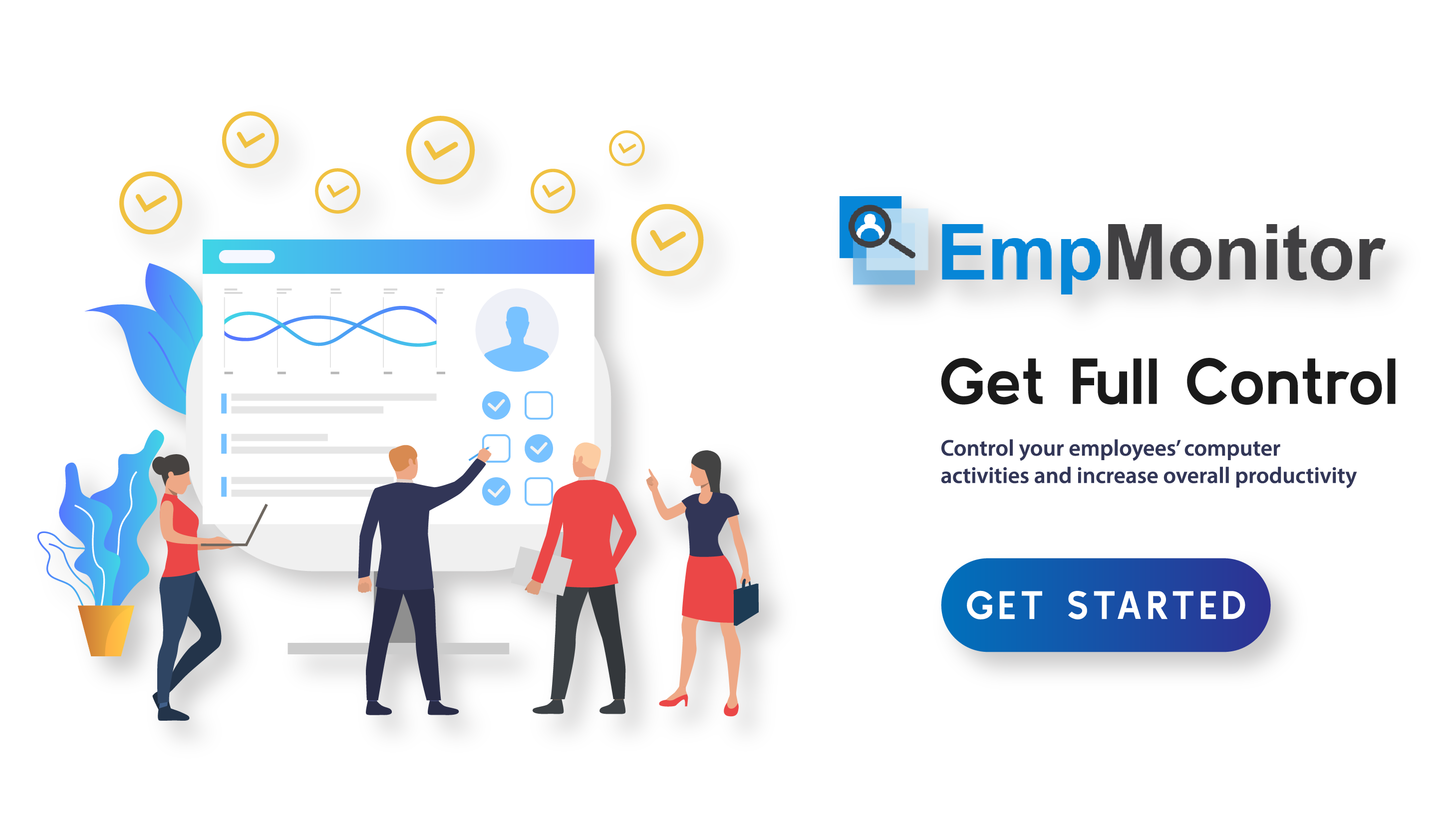Employee engagement is a key driver of success in any business. Engaged employees are more productive, more committed to their work, and more likely to stay with their current employer.
Measuring employee engagement provides valuable insights into the experiences of employees and helps businesses make data-driven decisions about how to create a more positive and productive work environment.
Whether you’re a business owner, HR professional, or manager, this blog will provide you with the information and tools you need to understand and improve employee engagement in your workplace. So, let’s dive in and learn how to measure employee engagement and why it’s important to do it right.
| Table of Contents
What is employee engagement Engaged Employee and disengaged employee Increasing Employee Engagement How to Increase Employee Engagement What is an Employee Engagement Software Employee Management Software #EmpMonitor Businesses Not Using Employee Engagement Softwares Conclusion |
Click the Play Button To Listen to This Blog!
What Is Employee Engagement?
Employee engagement is a concept that refers to the level of commitment, motivation, and connection that an employee feels toward their work and their workplace. Engaged employees take pride in their work, they see their job as more than just a way to earn a paycheck, and they are more likely to go above and beyond what is expected of them. Measuring employee engagement is a key factor in the success of a business, as engaged employees are more productive, more committed to their work, and more likely to stay with their current employer.
Engaged Employee and Disengaged Employee
An engaged employee is someone who is highly committed to their work and is motivated to perform at their best. They are satisfied with their job and have a positive attitude toward their workplace and colleagues. This leads to increased productivity, lower absenteeism, and improved job satisfaction for the employee.
On the other hand, a disengaged employee is someone who lacks motivation and is not fully committed to their work. They may feel unvalued, unappreciated, or simply disinterested in their job. This can lead to decreased productivity, higher absenteeism, and a higher likelihood of leaving the company.
EmpMonitor is an employee management software that can provide valuable insights into employee engagement levels. The software can track and analyse data on employee behaviours, such as work hours, productivity, and communication patterns, which can indicate employee engagement.
By analysing this data, managers can identify trends and patterns to determine which employees are engaged and which ones may be disengaged. This information can be used to create targeted measuring employee engagement initiatives and support employees in their professional development.
Increasing Employee Engagement
Improving employee engagement is crucial for businesses of all sizes and industries. Engaged employees are more productive, more committed to their work, and more likely to create a positive and productive work environment, which can improve morale and foster a sense of belonging among employees.
This in turn can lead to increased innovation, improved safety and health outcomes, and better financial performance for the business. By increasing employee engagement solutions, businesses can attract and retain the best talent and achieve better results for all stakeholders.
How to Increase Employee Engagement
There are many ways to improve employee engagement and create a more positive and productive work environment. Some of the most effective strategies include:
Positive work environment: Creating a positive work environment, where employees feel valued, respected, and supported, can have a significant impact on engagement.
Fair compensation: Providing fair and competitive compensation, including benefits and other incentives, can help employees feel more valued and motivated to perform at their best.
Communication: Regular, open, and transparent communication between employees and management can help build trust and foster a sense of belonging.
Flexibility: Allowing employees to have flexibility in their work schedule, such as flexible hours or remote work options, can help increase job satisfaction and reduce stress.
Recognition and appreciation: Regularly recognizing and appreciating the hard work and contributions of employees can help boost morale and increase employee engagement.
Adapting these strategies to improve employee engagement will surely help you create a positive and productive workforce engagement.
What Is An Employee Engagement Software?
Employee engagement software is an workforce assessment tool that businesses can use in tracking and measuring employee engagement, gather feedback, and make data-driven decisions about how to improve the work environment. These tools can take many forms, including employee engagement surveys, pulse surveys, feedback platforms, and gamified assessments.
But why to invest in an employee assessment tool?
Let us know the answer.
By automating the process of collecting and analyzing employee engagement data, businesses can save time and resources, and make more informed decisions about how to improve the work environment.
Employee engagement software also provides real-time insights into the experiences of employees, allowing businesses to quickly identify areas of concern and take action to address them. Whether used on their own or as part of a larger measuring employee engagement strategy, employee engagement software can play a crucial role in improving the work environment and driving success for businesses of all sizes and industries.
Employee Management Software #EmpMonitor
EmpMonitor is a popular employee monitoring software that can be used to engage employees and improve their productivity. Here are some steps to help you use EmpMonitor effectively for measuring employee engagement:
- Set goals and expectations: Use EmpMonitor to set clear goals and expectations for employee performance and productivity. Share these goals with your employees and use EmpMonitor to track progress and measure success.
- Provide real-time feedback: Use EmpMonitor’s real-time monitoring and feedback features to provide employees with immediate feedback on their performance. This can help to improve their productivity and engagement by giving them a clear understanding of their strengths and weaknesses.
- Encourage collaboration: EmpMonitor provides employee engagement solutions to facilitate teamwork and cross-functional collaboration. Encourage employees to work together on projects and share ideas and feedback.
- Offer training and development opportunities: Use EmpMonitor’s training and development features to offer employees opportunities to learn and grow. Encourage employees to take advantage of these opportunities and track their progress.
- Collect employee feedback: Use EmpMonitor to collect regular feedback from employees. This can help you to understand how employees feel about the company and identify areas for improvement.
- Analyse data and make informed decisions: Use EmpMonitor’s reporting and analytics features for measuring employee engagement metrics and identify areas for improvement. Use this information to make informed decisions about employee engagement initiatives and track progress over time.
By using EmpMonitor effectively, you can create a more engaged and productive workforce, and support the growth and success of your business.
Businesses Not Using Employee Engagement Software
When businesses don’t use an employee management system, they may experience a number of challenges and problems. One of the most significant challenges is the difficulty in keeping track of employee information and measuring employee engagement, which can lead to disorganization and decreased efficiency. This can result in errors and inconsistencies in payroll, time tracking, and other HR processes. Learning from employee surveys examples can be highly beneficial in management of employees.
Additionally, without a centralized platform for tracking remote employee engagement and collaboration, it can be difficult to build a strong sense of community and foster teamwork among employees. Managers may also have limited visibility into employee performance, making it difficult to identify areas for improvement and support professional development.
Furthermore, without a system for measuring employee engagement and training, it can be challenging for businesses to ensure that employees have the skills and knowledge they need to succeed. Ultimately, not using an employee management system can result in an increased risk of errors, compliance issues, and decreased productivity, which can have a negative impact on business success.
Read More
How To Measure Employee Engagement At Your Workplace?
Employee Management Software: Why You Need To Use One At Workplace?
Top 8 Employee Retention Ideas To Keep Your Employee Happy And Productive
Wrapping Up!
In conclusion, measuring employee engagement is crucial for businesses looking to create a thriving workplace culture and drive success. Engaged employees are more productive, innovative, and committed to their work, which can have a positive impact on business outcomes.
In this blog post we have come across various approaches for measuring employee engagement. By using a combination of these approaches and gathering data on factors such as attendance, productivity, and feedback, businesses can gain a comprehensive understanding of employee engagement levels.
However, it’s important to remember that simply measuring employee engagement is not enough. The data must be acted upon to drive meaningful change and create a culture of engagement. This may involve implementing initiatives to address areas of employee disengagement, investing in employee development and training, and creating opportunities for employee feedback and collaboration.
So let’s create a work environment that supports employee engagement, motivation, and satisfaction, which can lead to improved employee engagement and retention, productivity, and business success.

















